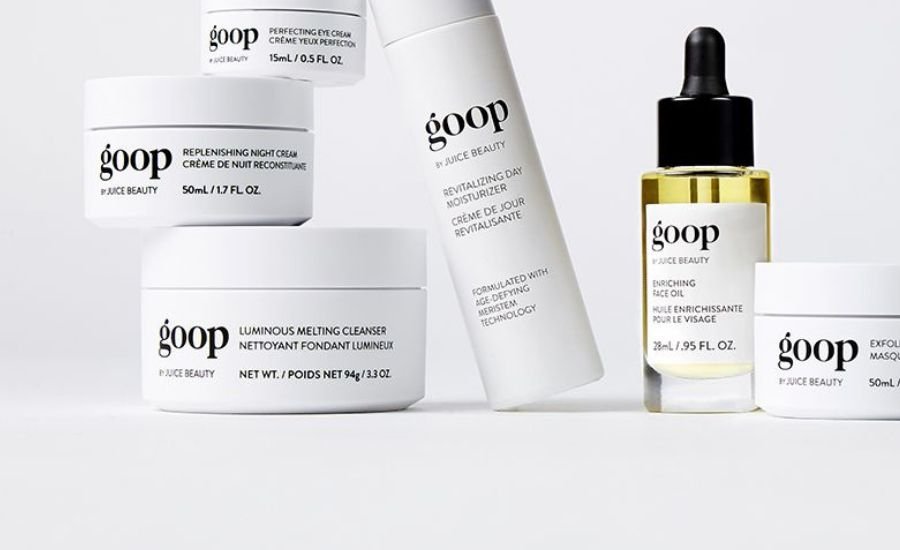Establishing a successful lifestyle brand in today’s increasingly competitive marketplace can set your business apart from others. Lifestyle branding goes well beyond selling physical products; instead it involves developing emotional connections between audience and product while sharing values which resonate deeply with consumers. This guide will lead you through each step necessary for creating such an identity which attracts loyal customers while remaining sustainable in an ever-evolving marketplace.
What Is Lifestyle Brand Marketing?
Lifestyle brands go beyond selling products or services; they represent an idealized way of living that resonates deeply with its target market. People who connect to a lifestyle brand don’t simply buy from it–they associate with its values, principles, vision. Instead of simply providing practical items that serve their needs as needs for material goods come along every day- lifestyle brands provide experiences and emotions which tap into customers’ aspirationsal needs for fulfillment and personal fulfilment.
Definition and Core Characteristics
Lifestyle brands are founded upon creating emotional connections between their audience and themselves, embodying lifestyle characteristics often catering to niche groups with shared interests or goals. Key characteristics of such brands may include:
- Emotional Connection: Brands should appeal directly to their audience’s emotions and desires in order to build an intimate bond and shared sense of identity among its target demographic.
- Consistency: Every element of a brand – logos, messaging and products – reflects its philosophy in an easily recognisable manner.
- Lifestyle: brands thrive by cultivating a sense of community among customers through shared values, which allow customers to feel close both to each other and with their brand itself.
- Influence: Lifestyle brands with lasting impact can shape peoples’ thoughts, actions, and lives beyond simply offering products. They leave lasting traces on consumers that transcend mere transactions.
Create Emotional Bond with Your Audience

Lifestyle brands owe their success to creating emotional connections between target customers and themselves, so the foundation for any great lifestyle brand lies in creating experiences tailored to customer values and aspirations. At Lifestyle brands we excel in this by creating experiences which mirror these sentiments.
Patagonia connects strongly with those who share its values about sustainability, conservation, and environmental activism – not simply through selling outdoor clothing – but as an emotional connector which fosters loyalty among customers who care deeply for the planet. These shared beliefs create strong emotional ties among consumers who enjoy its brand offerings.
Successful Lifestyle Brand Examples
Here are several lifestyle brands which have not only achieved market success but have also built lasting relationships with their customer base:
- Apple: More than selling electronics, Apple sells lifestyle. Their customers recognize this in themselves and appreciate being part of an experience which values innovation, creativity and simplicity.
- Nike: With their iconic slogan of “Just Do It”, Nike is an iconic lifestyle brand. Not content with selling athletic wear alone, Nike works tirelessly towards inspiring individuals toward leading active, goal-directed lives.
- Glossier: has built its cult following through their commitment to celebrating real, diverse beauty as well as using storytelling as an engagement mechanism with their target market.
Lifestyle Branding Is Crucial
Establishing a lifestyle brand is integral for businesses looking to make an impressionful statement about themselves. Doing this requires more than selling products; rather, creating an experience for customers is necessary as a strong lifestyle brand can foster community spirit, build loyalty and lead the company toward long-term success.
Building Community and Loyalty
One of the key advantages of lifestyle branding lies in building a community around it. Consumers don’t just purchase products–they become part of something larger. Through social media posts, events, or brand initiatives such as Peloton’s fitness club community of fitness enthusiasts who share an enthusiasm for health and wellbeing – creating something far deeper than simply physical workout equipment.
Harmonization of Values and Aspirations
An appealing lifestyle brand connects with its target market by reflecting their values. This is particularly crucial today, where consumers increasingly prioritize brands that stand for something meaningful; Allbirds is an example of such an ethical brand which not only sells product; they give people an opportunity to have an impactful impactful on global issues through ethical sourcing practices and sustainability programs.
Differentiation from Traditional Brands
Lifestyle brands stand apart from their counterparts by emphasizing more than the product features or prices; instead they create an experience for customers that goes beyond simply purchasing an item – one which taps into both emotional and aspirational needs of buyers. Lifestyle brands distinguish themselves and stand out in an oversaturated market by doing this.
How to Establish a Lifestyle Brand.
Create your lifestyle brand requires clear vision, strategic planning and an in-depth knowledge of your target market. Here’s how you can start:
Finding Your Target Audience
Step one of establishing a lifestyle brand is understanding your ideal customer and their needs, desires, and values. Once identified, targeting them with messaging that resonates deeply can then follow.
Establish Your Brand’s Purpose and Mission
Your brand’s purpose serves as the central drive behind everything it does, from product development and marketing campaigns to environmental protection efforts. At Patagonia, theirs is to protect the planet; that mission guides everything they do from product design and product testing through to brand identity creation and maintenance.
Establish a Clear Brand Identity Framework.
Consistency is at the core of lifestyle branding. Every touchpoint with your audience, such as websites, social media posts or packages–should showcase your values and message accurately. This consistency helps build trust and recognition over time.
Leveraging Storytelling and Authenticity for Success
Storytelling plays an instrumental role in lifestyle branding. Telling an engaging tale about your brand’s origins, mission, values and goals helps form stronger ties to its audience – something Glossier does exceptionally well by telling an engaging tale about real beauty and authenticity that resonates with its millennial and Gen Z base.
Strategies for Building a Lifestyle Brand
Once your lifestyle brand is up and running, it is key to employ strategies which will foster its development and expand upon it.
Engaging Through Social Media
Social media platforms are essential tools for expanding and strengthening the presence of your brand online. By engaging with followers, sharing behind-the-scenes posts, and advocating your values – which all help strengthen relationships while drawing in new customers – social media allows your business to build and foster its community online.
Fostering Brand Communities
Establishing a community around your brand can expand its reach exponentially. Through Facebook groups, Instagram hashtags or in-person events, creating an open environment where customers can come together can form lasting bonds to your product and organization that lead to loyal fans who keep returning time after time.
How to Establish a Lifestyle Brand.
Influencer marketing can be an extremely powerful strategy for lifestyle brands. Partnering with influencers that share your values can amplify your message and introduce the brand to new audiences – as evidenced by Nike’s successful use of influencer marketing by teaming up with athletes and fitness influencers to promote its products and values.
Lifestyle Branding Has Its Share of Obstacles
Lifestyle branding offers many advantages, yet also poses significant obstacles. Brands must remain true to themselves while scaling.
Staying Authentic Over Time
As your lifestyle brand expands, authenticity must remain its central value. Consumers quickly recognize when brands attempt to hide behind false claims; by remaining true to your mission and values, your brand can remain credible and trusted by consumers.
Balancing Growth with Brand Values
Expanding your brand while staying true to its core values can be challenging, yet essential as you scale. Achieve growth while protecting what makes your business distinctive will require finding a balance between expansion and maintaining core elements that define its essence.
Future Trends in Lifestyle Branding
Lifestyle branding continues to develop at an astounding rate, and here are a few trends shaping its future:
Sustainability and Inclusivity

Consumers today are becoming more conscious about environmental and social issues, making brands that prioritize sustainability, inclusivity and social responsibility likely to build stronger connections with their audience.
Personalization in Marketing
Consumers want personalized experiences that make them feel valued. Brands are using data and technology to create tailored experiences that meet the unique needs of each customer.
Conclusion
In conclusion, building a lifestyle brand is about more than just selling products; it’s about connecting with people on an emotional level. By understanding your audience’s values and offering a brand that reflects their lifestyle, you can create a loyal community that truly believes in what your brand stands for. A strong lifestyle brand becomes a part of your customers’ lives, and that’s what makes it special.
As the world changes, so do the ways we connect with others. The future of lifestyle branding is all about staying authentic, offering personalized experiences, and keeping values like sustainability at the forefront. If you focus on these things, your brand can grow, stay true to its mission, and keep making a positive impact on people’s lives.
FAQs
Q: What is a lifestyle brand?
A: A lifestyle brand is a company that sells products or services that reflect the values, beliefs, and lifestyle of its target audience. It creates a deep emotional connection, making customers feel like they belong.
Q: How does a lifestyle brand differ from a regular brand?
A: Unlike regular brands that focus on products, lifestyle brands focus on creating an identity and a community. They align with customers’ values, emotions, and aspirations, making them more than just a business.
Q: Why is building a lifestyle brand important?
A: A lifestyle brand helps build loyalty, fosters community, and connects emotionally with customers. It makes your brand stand out and creates long-term relationships, not just sales.
Q: What are some examples of successful lifestyle brands?
A: Famous examples include Nike, Apple, and Patagonia. These brands go beyond just selling products; they inspire their customers by promoting a lifestyle, like fitness or environmental responsibility.
Q: How can I create a lifestyle brand?
A: Start by understanding your audience’s values, creating a clear brand purpose, crafting a consistent identity, and telling authentic stories. Make sure your brand resonates emotionally with your customers.
Q: What role does social media play in lifestyle branding?
A: Social media is crucial for engaging with your audience, building a community, and sharing your brand’s values. It helps connect with customers on a personal level and increases brand visibility.
Q: What challenges come with building a lifestyle brand?
A: Some challenges include staying authentic as your brand grows, balancing growth with your brand’s core values, and keeping your message consistent across all platforms.
Back To Homepage
